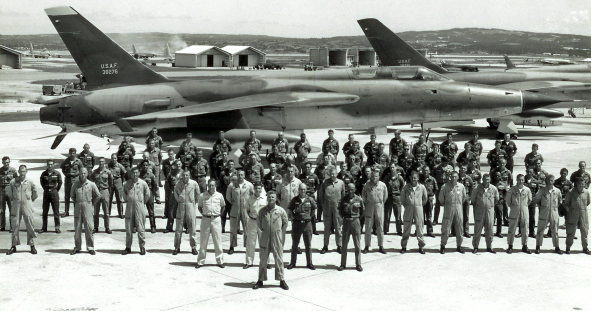The Remarkable Exploits of Three Thunderchief Pilots Are a Must-Read on Memorial Day.
It’s Memorial Day in the United States, part of a long three-day weekend where people in the U.S. reflect on the high cost of freedom and liberty as they remember those who sacrificed their lives for it. While it is a somber holiday it is also a celebration of heroes. Heroes who set the highest bar for selflessness, honor and sacrifice. It is a day when we recalibrate what it means to be an American.
There are a remarkable number of great American stories to be told on Memorial Day. Realistically, far too many to tell in a single day. I find these stories daily in research about military aviation history. Even after years I unearth new names and heroic exploits every week. It is a seemingly endless tablet of remarkable tales etched into the bedrock of freedom’s foundation. And as history arcs forward into the future, the foundation is expanded by more and more heroes.
There is one era that produced images that are particularly iconic to me. Images that shaped my boyhood impression of what it means to be a hero. It was the era of the early U.S. involvement in the air war over Vietnam. In particular, one group of pilots repeatedly shows up in photos of medal winners and in heroic tales. They were the “Thud drivers”, the pilots of the Republic F-105 Thunderchief.
The F-105 Thunderchief itself was an ambitious aircraft. It’s journalistically and politically indelicate to write about any historical military aircraft as “bad” or “dangerous”, so we will handle the F-105 and its history over Vietnam objectively and respectfully. Early in its history, during 1961, the F-105 had the lowest rate of accidents of any jet fighter in the history of the Air Force. But by June of 1964 accidents in the F-105 Thunderchief increased remarkably. There were a reported 33.7 accidents per 100,000 flying hours in the F-105 by half way through 1964, a massive increase compared to earlier years.
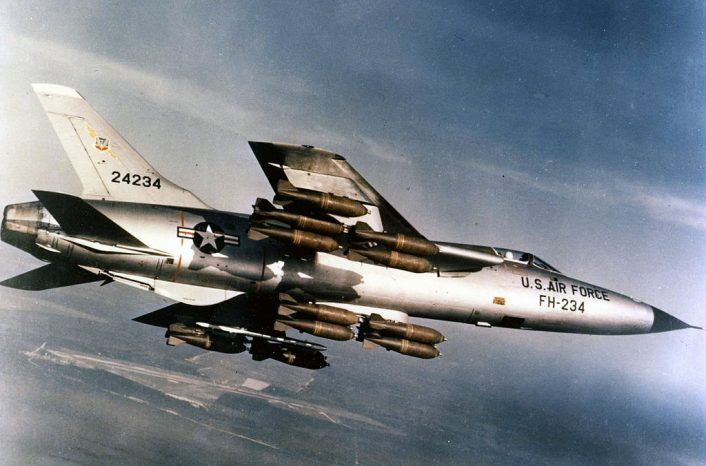
Especially during this era in the Thunderchief’s history, it was best to stick to observations that acknowledged its curvaceous, needle-nosed fuselage, artfully shaped wings that leave one with the visual impression of speed, and its remarkable performance. Even more so than the F-104 Starfighter, the F-105 Thunderchief was what most Americans visualized when they heard the term “Jet Fighter” in the 1960’s.
The Thunderchief looked the part of a supersonic fighter. It did not, however, deliver great survivability during this era. It was not because the Thunderchief was somehow cursed. It may be fairer to suggest its mission was cursed.
It’s also best not to discuss the calamitous employment of the F-105 by the U.S. Air Force Thunderbirds that ended in a fiery aircraft disintegration on May 9, 1964 at an airshow venue in California. That F-105 broke apart after receiving initially undetectable damage earlier in its career while midair refueling. The Thunderbirds only flew the F-105 in six shows before they switched back to the North American F-100D Super Sabre. The Thunderbird F-105 crash killed USAF Capt. Gene Devlin in aircraft 57-5801.
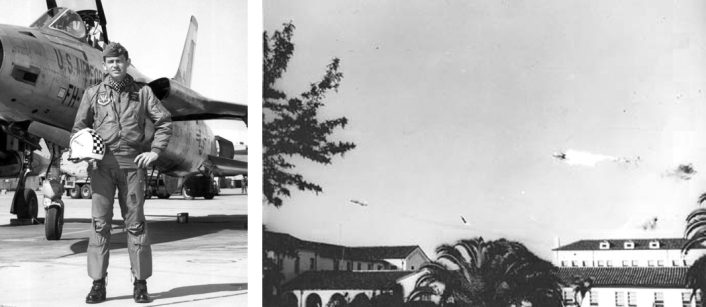
Thunderbird pilot Capt. Gene Devlin’s F-105 crash on May 9, 1964 was the 15th accident in an F-105 in only five months during 1964. But it would get worse. Only four days after Devlin’s crash in California, a Nellis AFB F-105D lost its engine on takeoff and crashed into the Las Vegas suburb of Woodland North. The results were catastrophic. A mother and three children died on the ground where the aircraft crashed. The impact leveled seven houses and destroyed two cars. More homes burned near the crash scene. The pilot did not survive either. Following that horrific run of accidents that culminated in the Woodland North calamity the Air Force grounded all F-105s until a cause for the accidents was determined. A number of problems with the F-105 were subsequently discovered and corrected during inspections and the aircraft were returned to service in time for the escalation of the Vietnam War.
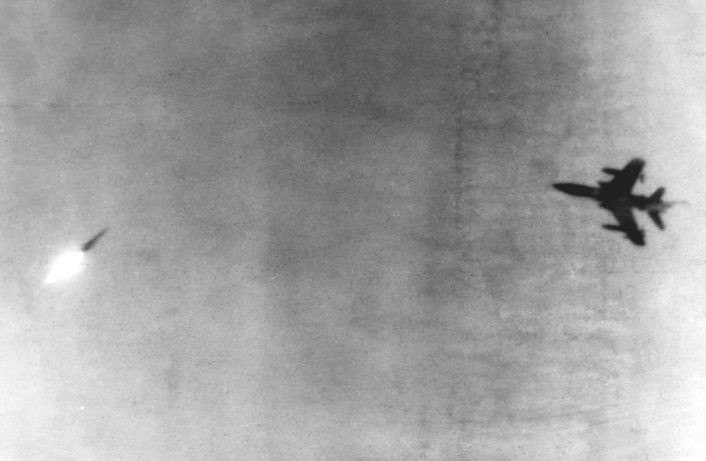
It is fair to acknowledge the Republic F-105 Thunderchief was a plane thrust into a mission that was largely misunderstood, frequently evolving, and very different from what the “Thud” was originally designed for, low-level, supersonic nuclear strike missions. As a result, the “Thud” earned its unfortunate nickname by raining out of the Southeast Asian skies with frightening regularity, often taking with it the lives of America’s finest.
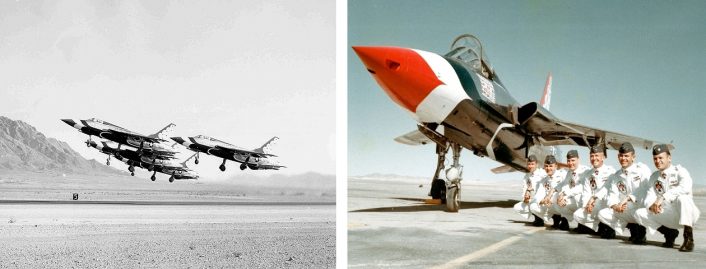
But also in fairness, the F-105 Thunderchief shouldered the majority of the USAF’s burden of bombing heavily defended targets in North Vietnam. In the first five years of the American involvement in the air war over Vietnam, the F-105 Thunderchief flew 70% of all attack missions. Regardless of your assessment of the Thunderchief, the odds were always stacked against it. In all, a staggering 382 Thunderchiefs were lost in Vietnam, nearly half the total number that was built.
Different from the aircraft itself the men who flew the F-105 Thunderchief, like USAF Captain Samuel E. Waters, were absolutely dependable no matter the odds or the mission. Capt. Waters was the type of a man you think of when you picture a jet fighter pilot. Chiseled features, serious countenance, heroic look, stony glare.
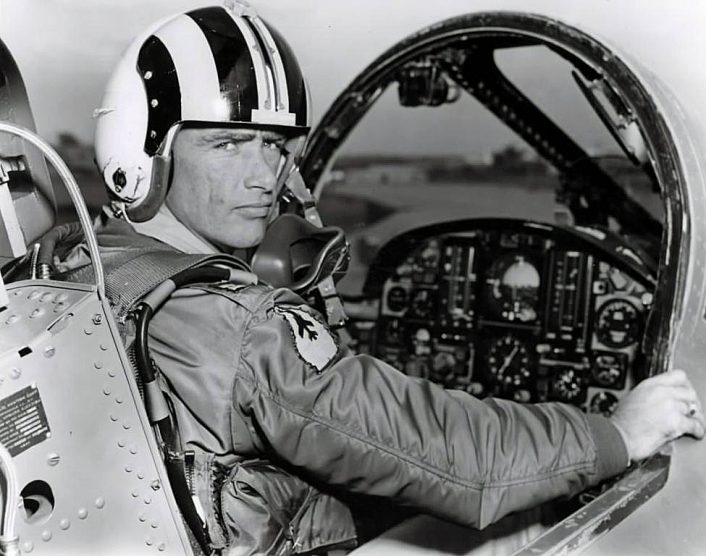
Unlike his outwardly attractive but structurally dubious aircraft, Capt. Waters had intrinsic mettle. He was a hero. An icon. The worthy subject of statues in town squares or the name of a new high school.
Capt. Samuel E. Waters died 51 years ago on Tuesday December 13, 1966 over the dense jungle region of Ha Tay Province, North Vietnam. It was, according to some records, the first day the U.S. launched airstrikes on the capital city of Hanoi. The 29-year old combat pilot was a member of the 12th Tactical Fighter Squadron, 388th Tactical Fighter Wing.
It is already difficult to sort through accurate records about Captain Samuel E. Waters. According to three websites and social media posts, Capt. Waters was flying Republic F-105D Thunderchief #61-0187 the day he died. His target was the Yen Vien railroad yard just ten miles south of the city center outside Hanoi. He had successfully bombed his target and was exiting the area when his aircraft was struck by an SA-2 Guideline surface-to-air missile (SAM). He managed to nurse his wounded Thunderchief for about 15 miles before it finally succumbed to damage from the missile.
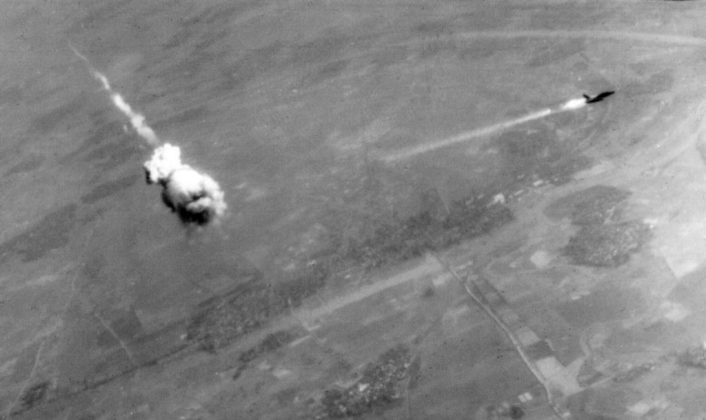
What struck me about the photo I found of Capt. Samuel E. Waters was that his image, and the similar images of men, fighter pilots, like him shaped my impression of what a real man truly was. What a hero is. In small suburbs and country towns people talked about these men. Men like Capt. Waters.
Another remarkable hero of the Thunderchief era was Lt. Karl W. Richter. Richter was an Air Force Academy graduate from 1964. He began training to fly fighter aircraft after graduation and subsequently volunteered to go to Vietnam. Richter learned to fly the F-105 Thunderchief at Nellis AFB, Nevada. He immediately volunteered to ferry an F-105 over to Thailand where he knew he would be put in the action. Once he arrived in Thailand he was assigned to the 421st Tactical Fighter Squadron (TFS) of the 388th Tactical Fighter Wing (TFW) at Korat Royal Thai Air Force Base, a hub of F-105 action over Southeast Asia.
Lt. Richter flew his first F-105 Thunderchief combat mission only four days after arriving in Southeast Asia. He eventually completed 198 combat missions over Vietnam in a number of aircraft including the F-100 Super Sabre and the O-1A Bird Dog light Forward Air Control (FAC) aircraft. Richter also shot down a North Vietnamese MiG-17 on September 21, 1966 using the cannon on his F-105. At only 23 years old and still a First Lieutenant, Richter was the youngest USAF combat pilot to shoot down an enemy aircraft in the Vietnam conflict at the time.
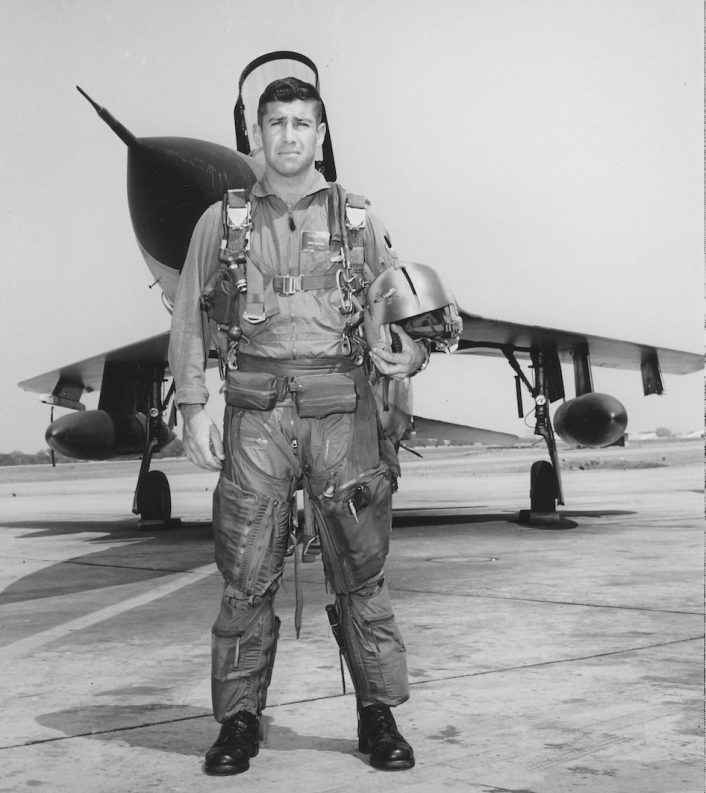
Lt. Karl W. Richter was shot down on July 28th, 1967 at the age of 24. He was leading a bombing attack on a North Vietnamese bridge when he was struck by automatic anti-aircraft fire (AAA). Richter managed to eject from his F-105 and parachuted into rocky terrain where he sustained life-threatening injuries including a broken neck. Although a rescue force was able to retrieve him quickly, Lt. Richter died in the rescue helicopter on his way back to safety.
There are several statues of Lt. Karl Richter at prominent locations around the U.S. commemorating his remarkable courage and career. Perhaps the most significant inscription is on the one displayed at Maxwell AFB in Alabama. Below the chiseled figure of F-105 Thunderchief fighter pilot Lt. Karl W. Richter the Biblical inscription of Isaiah 6:8 reads:
“Whom shall I send, and who will go for us? Here am I. Send me.”
It is not only a fitting inscription for the lives and sacrifices of F-105 Thunderchief pilots like USAF Capt. Gene Devlin, Capt. Samuel E. Waters and Lt. Karl W. Richter, but for every service person we remember on Memorial Day in the U.S. who gave their lives for freedom and security.
Top image: Crews of the F-105D and F-105G Thunderchiefs in Thailand. (USAF)

